#encaustic techniques
Text
Flowers, Botanicals, Natural Processes & Materials: A Vermont Encaustic Retreat
Flowers, Botanicals, Natural Processes & Materials: A Vermont Encaustic Retreat

View On WordPress
#art workshops#artist process#botanicalart#encaustic painting#encaustic techniques#landscape#mixedmediacollage#mixedmediaencaustic#mixedmediaworkshop#pressedflowers#vermontartist#vermontartretreat
1 note
·
View note
Text

Rainbow Divination
Rainbowmancy is not only the act of magic, but, much like in witchcraft, divination is also a part of it. (If you want it to be, anyway, you can do whatever you want forever!) Here are some different techniques for using rainbows in divination.
Reading Rainbows: When there is an actual rainbow in the sky, you could read the signs to divine. Look at the rainbow and consider the place on the horizon, depth of colour, full arc or just partial, beginning and end, etc.
Existing Decks: There are many decks available through either the creators or your local witchy/bookstore that have rainbow themes and symbolism. Some examples: Prism Oracle, Secret Language of Colour (I recommend!), Spectrowhirl Tarot, SoulSpace Oracle, Queer Tarot, Holographic RWS, Sacred Creators Oracle, Rainbow Tarot, Tarot at the End of the Rainbow.
Stone Scrying: What is says on the tin, scrying in rainbow stones, or if you have a quartz crystal, they sometimes can have rainbow inclusions which work really well.
Water Scrying: Take a glass or white bowl or cup and fill it with water. Add a few drops of coloured ink. Alcohol ink, writing ink, or acrylic inks work just fine. Look at how it flows, what patterns it makes, what symbols do you see? For meanings you could make your own dictionary, which I recommend, or use a tasseomancy (tealeaf reading) guide to get you started.
Rainbow Scyphomancy: This technique was generously shared with me by Nova. Scyphomancy means divination with a cup or goblet. With rainbow scyphomancy the white cup is first filled with water and then emptied. Drops of food colouring are added, and the cup is turned over three times, each one in a different direction, lastly the cup is swirled three times. The colours will spread over the white surface, which can then be read much in the same way as tasseomancy.
Paint Chips: These come in every shade and colour, so would be great for making your own deck. Write keywords or draw symbols on them the meanings of which match the colours.
Pendulum: A pendulum in one of the rainbow crystals for example. Or nowadays you have rainbow pendulums made from different crystals, either fused together, or beads stacked on top of each other (often called "chakra pendulum". We'll get into chakra's in the next bit). A small galaxy jar on a chain, or a small bottle filled with coloured sand, sugar, salt, or resin, will also make a great pendulum.
Crystal Casting Oracle: An osteomancy method using rainbow cystals, or crystals in each colour of the rainbow. Before I mentioned that my favourite combination is garnet, carnelian, citrine, aventurine, turquoise, sodalite, and amethyst. I use tumbled stones of these to cast on divination grids or mats. Much like charm casting. Each stone has their own meaning depending on where they land.
Encaustic Art: This is an art technique where coloured beeswax is heated on a small painting iron and then pressed to wood, or a special shiny paper. Artists can use this to create beautiful and intricate paintings, often of landscapes. This same technique, however, can also be used for divination. By intuitively adding colours and moving the painting iron, a layered painting can be made. The wax will pool, swirl, and leave open spots, making an interesting painting which you can see symbols, figures, and natural features, which can then be interpreted.
[Part of a Rainbowmancy series, masterpost here]
12 notes
·
View notes
Text

MUMMY PORTRAIT OF A LADY
Hawara, Egypt, Trajan Period, beginning of the 2nd century A.D.
Wooden panel, polychrome painted using the encaustic technique and mounted on a later wooden panel.
Koller Auctions
25 notes
·
View notes
Text


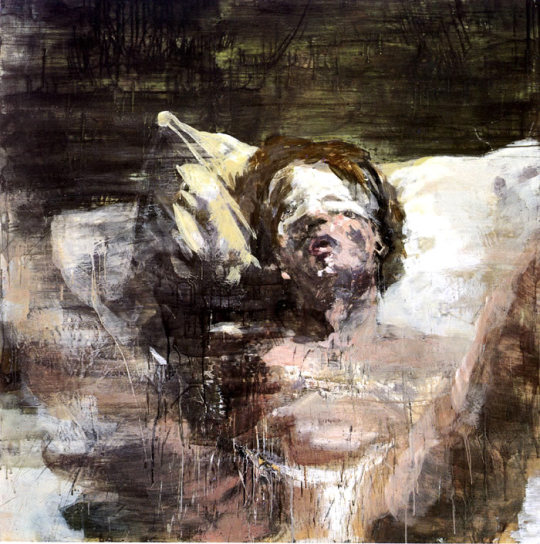


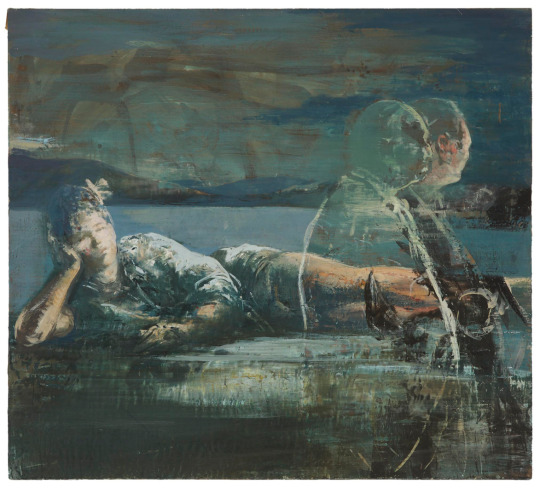

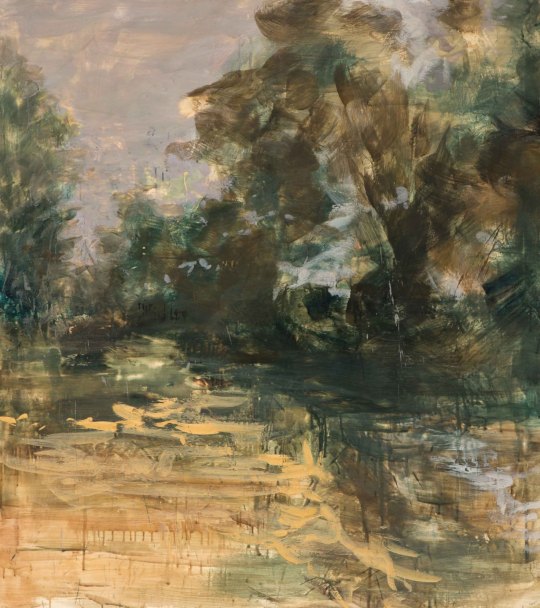


Tony Scherman (born 1950 – Toronto, Canada)
At a time when Pop Art continued to prevail and Conceptualism was on the rise in the 1970s, Tony Scherman chose to pursue image and figuration, working exclusively in the uncommon wax and pigment encaustic technique. His paintings and works on paper weave through the history of art and embrace image-imprints through the modern technologies of camerawork and film. Over the past 30 years, portraiture has become a primary subject matter that are his contemporary meditations encompassing villains and celebrities, bombshells and intellectuals.
Born in Toronto in 1950, Scherman spent his childhood and young adult life in Paris, Europe and then London from 1955. His father Paul was professionally active as a conductor and violinist in Canada, Europe and England. In 1974, Scherman received an MA from the Royal College of Art in London, and returned to Toronto in 1976. He has had more than 100 solo exhibitions across Canada, in the United States and Europe, and in Beijing and Hong Kong. His solo exhibition Chasing Napoleon circulated to six American university museums in 2001-2002.
15 notes
·
View notes
Text
Artist research.
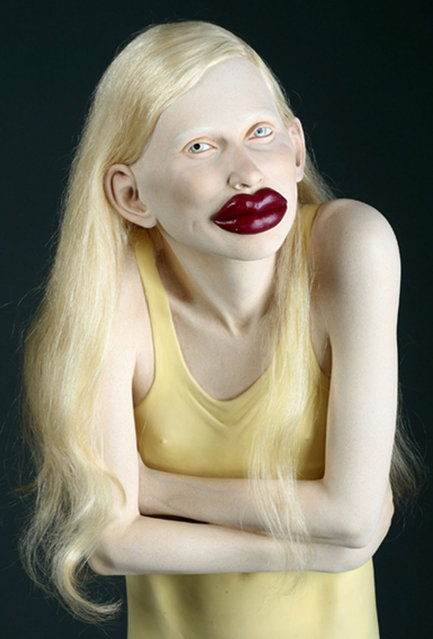
Tip Toland (Vaughn) is a ceramic artist whose work is subtly autobiographical: within a frozen moment, teeming with humanity, exists a vessel for her thoughts and feelings. She earned her BFA in ceramics at the University of Colorado and later received an MFA in ceramics from Montana State University. Her more recent three-dimensional stoneware sculptures are close to life size, sometimes larger. She uses paint, encaustic technique and hair to create figures with "uncanny skin quality, utterly convincing hand gestures and eerily spontaneous facial expressions.
youtube
She was amazing and mesmerizing to me. But being in the rudimentary stage of the artist, I used only a strand of hair for my ceramic composition - I will never have the courage to do more.
18 notes
·
View notes
Text
Pathways #2
My painting "Pathways" was created using an encaustic technique known as accretion. For this process, I applied multiple layers of hot wax onto the canvas, and allowed them to cool before brushing on additional layers. Through this laborious and time-consuming process, I gradually built up a thick texture within the wax which gave the painting its unique character.
As I was creating Pathways, I wanted to explore the concept of how each of us take different paths throughout our lives. By depicting a seemingly infinite array of pathways, I wished to capture the idea that though we can all take different directions in life, all journeys are intertwined with one another. Pathways is an exploration into how we many traverse various paths before reaching our destinations.

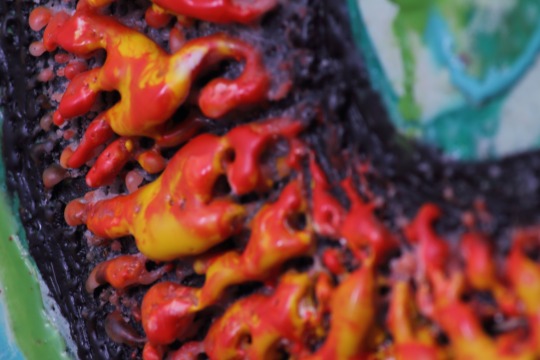
#abstract#abstracart#painting#encausticpainting#artists on tumblr#artist#contemporyart#contemporaryart#encaustic#contemporaryabstract#artwork#art#traditional art#contemporary art#encausticart#fineart#art collecting/sales#artcollective#modrenart#art stuff
10 notes
·
View notes
Photo
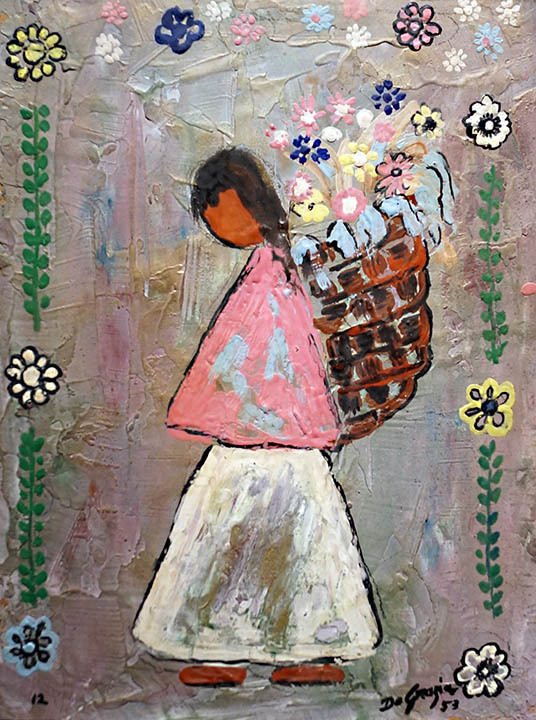
Between 1953 and 1957 DeGrazia explored the technique of encaustic painting, also known as hot wax painting. Using heated beeswax to which colored pigments are added, he created dozens of encaustic paintings.
#TedDeGrazia #DeGrazia#Ettore#Ted#Artist#NationalHistoricDistrict #GalleryInTheSunMuseum#Museum#Gallery#Nonprofit #Foundation#Adobe#Architecture#Tucson#Arizona#AZ#SantaCatalinas #Desert#EncausticPaintings#HotWax
11 notes
·
View notes
Text
i have a pet project i want to do but not really enough time and skill (or money) to do and its killing me
so you know the met did their exhibit on how greek statues were painted. we all know this right. they looked stupid as hell. except how the met painted them is NOT how greek statues used to look.

this is done on plaster with matte paint that is done very flat. i understand why this was done as they just wanted to recreate a general idea of the colors based on what would be available to the greeks and pigment remains left on the statues. the issue is the greeks would not have done flat washes of color. they used encaustic painting, with beeswax. this painting technique was done in small, slightly transparently layers that you could suspend even bits of metal or beautiful shimmer pigments in and is shockingly lifelike.
so i want to get a small bust made in venetian plaster (closest to the natural sheen of marble bc i am not made of money to have someone carve me one from marble themselves) and paint it with beeswax pigments and see how much more lifelike and less silly it can look. if possible id like to do it with natural pigments they had access to (if i can get them and they wont kill me)
that being said if you have more experience with encaustic painting, painting sculptures, or just want to do this yourself i would love to see it please please please i dont care if you take my idea i just want to see this done more than i want credit
7 notes
·
View notes
Photo

MWW Artwork of the Day (5/5/22)
Carl Rottmann (German, 1797-1850)
Corinth with Akrocorinth (1850)
Oil on cleaning board, 161.7 x 205.5 cm.
Neue Pinakothek, Munich
Rottmann came from a family of artists, which brought him into contact with other Heidelberg painters early on. A major work was the Greek Cycle, based on studies made during a visit to Greece in 1834-1835 and destined for the Neue Pinakothek in Munich. These were done in encaustic (a technique employing heated wax colours that fused after application), and Rottmann worked on them until his death. In these landscapes, the architectonic structure of rigorous, classical composition is combined with a dramatic treatment of colour, expressed through light and other natural phenomena.
3 notes
·
View notes
Text
Diego Rivera - Artist research post
Diego Rivera was a Mexican painter and muralist. He was born December 8, 1886, in Guanajuato, Mexico. He passed away on November 24, 1957, in Mexico City. A lot of his work consisted of murals. He was a part of the Mexican Muralist movement and made a great impact in this community of art. The themes in his work related to his native home, Mexico and issues relating to society.

This work is called 'Creation' done in 1922-23 by Diego Rivera. This was Diego's first government-commissioned mural for the Bolivar Auditorium of the National Preparatory School in Mexico City. This mural is over a thousand square feet. As for the medium, it is done with fresco and the technique of encaustic. This mural really caught my attention because of the whole composition and the vibrant colors. This mural consists of religious and mythological components that he combined to make this amazing mural. The way that he chose to make one side of the mural look the same on the other side, while using different characters. It gives the mural a sense of unity in the composition, which is pleasing to the eye. One thing that I found really interesting about this mural, while I was doing my research is that Rivera actually didn't like this mural. He didn't like it because he thought that his technique, he used with this painting was too Italian. I personally, am really fond of murals, which was another reason as to why I liked this mural.
Creation, 1922 by Diego Rivera
Diego Rivera | Mexican Muralist, Artist & Revolutionary | Britannica
Diego Rivera Paintings, Bio, Ideas | TheArtStory
0 notes
Text
The Vermont Landscape as Muse: Encaustic on Paper & the Written Word
The Vermont Landscape as Muse: Encaustic on Paper & the Written Word
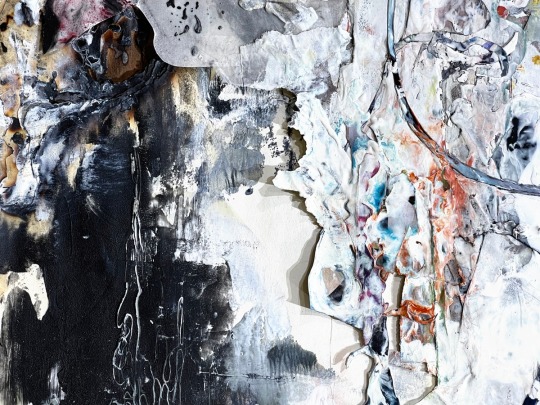
View On WordPress
#art workshops#artist process#encaustic painting#encaustic techniques#imageandwriting#landscape#vermontartist#vermontartretreat#writingworkshop
0 notes
Text
All about painting
- Painting is away for artists to express their ideas, emotions, opinions, beliefs and many other expressions. They do this through visual language by creating certain aesthetic qualities in a two- dimensional way.
-Paintings are made up of shapes, lines, colours, tones, textures, and other marks. This creates volume, space, movement and light within work. All these aspects are combined in order to convey whatever the artist wants to express to the viewer.
-mediums: tempura, fresco, oil, acrylic, watercolour, as well as other water based paints such as, ink, gouache, encaustic and casein.
-forms of painting: mural, canvas on easel, panel, miniature, scroll, screen, fan and other more modern forms.
cultural traditions and painting: tribes, religions, guilds, royal courts, and states had a high influence and controlled the form, imagery and subject matter of paintings. They also decided whether a painting was for ritualistic, devotional, decorative, entertaining or educational purposes.
- Due to fine art, many artists began combining other mediums and ways of working with painting. For example artists combined painting with sculpture and collage.
painting techniques:
-acrylic painting=uses synthetic resin to bind pigments and can be diluted.
-action painting= consists of randomly splashed, thrown or poured paint onto surface.
- aerial perspective= a technique the allows a distant object with in a painting become fainter and more blue.
- anamorphosis=allows an artwork to be distorted from the viewpoint of one angle and to not be distorted from another angle.
-camaieu= subjects or objects in paintings are convey and painted through shades or single tints and colours. These hues are unnatural to the objects
-casein painting=fast drying, water- soluble medium
-chiaroscuro= strong painterly contrast between light and dark that effect the entire composition.
-divisionism=this technique is used in Neo-Impressionist paintings and is defined by separation of colours, usually convey by individual dots.
-easel painting= an easel is an upright support usually made from wood that allows surfaces such as stretched canvas to rest upon.
-encaustic=also known as hot wax painting that allows coloured pigments to be added.
-foreshortening= a technique that allows an object or body be depicted in a way that creates an illusion of projection or extension in space.
-fresco painting= a technique mainly used for mural painting and is used on freshly laid lime plaster. Water is combined with the dry powder pigment to merge with the plaster.
-gouache=is a type of opaque watercolour that consists of natural pigment water, a binding agent and at times additional inert material.
-graffiti= images or text usually painted onto buildings using spray paint.
-grisaille=a painting that has been done using only shades of grey or another neutral greyish colour.
-impasto= paint applied thickly on a surface allowing palette knife and brush marks stand out.
-miniature painting=a small illustration that us created and used to decorate an ancient or medieval illuminated manuscript.
-mural= a graphic artwork that has been applied directly to a wall, and other permanent structures.
-oil=painting with pigments with a medium of drying oil as a binding agent.
-panel=a panel of wood either displayed alone or with a number of others, used before canvas became a popular surface to paint on.
-panorama= these works are usually extremely large scale that depict an entire view of a specific subject i.e and entire town.
-perspective=linear or point projection are two types of graphical projection perspective.
-plain-air painting= an act of painting outdoors
-sand painting=the act of trickling small amounts of crushed, coloured sandstone, charcoal, pollen or other dry materials into paint and then applying to a smooth surface.
-scroll painting=paintings completed on scrolls. Scrolls are usually made from paper or cloth.
-sfumato= actively softening the transition between paint colours making it hard for the viewer to focus on certain details.
-sgraffito=Italian word meaning “scratched” the action consists of putting down a primary surface i.e paint and then scratching that surface.
-sotto in su=illusion ceiling paintings popular within the Renaissance, Baroque and Rococo art period
-tachism= a french style of abstract painting that was popular within the 1940s and 1950s.
-tempura painting=also known as egg tempura is a fast-drying painting medium that is made from pigments that are mixed with water-soluble binding mediums, usually egg.
-tenebrism= this technique came from Italian tenbroso that consisted of dramatic illumination creating a very high contrast of light and dark within a painting.
-tromp l’oeil=is an artistic term that describes a high level of a realistic optical illusion of three- dimensional space and objects on a two- dimensional surface.
How does this relate to my work?:
As I have chosen to utilise paint as my main medium within this project I decided to research painting and painting techniques. May sound simple and obvious, however, paint is not a medium that I usually gravitate towards. Therefore, I felt it was necessary to research the medium, during which I discovered techniques and ways of working that I was not aware off. I plan to use some of these techniques within my work. For example I will make use of the technique Sgraffito, sfumato, impasto, acrylic painting, action painting, easel painting and using canvas as a surface to paint.
0 notes
Text

"Glass blowers" Tkachenko V. I. Gus-Crystal 1969
cardboard, mixed technique.
Tkachenko V. I.
Monumentalist. Born on April 20, 1932 in Mozhaisk, Moscow region. In 1952 he graduated from the Moscow City Art and Pedagogical School. In 1960 he graduated from the Moscow Higher Art and Industrial School (Stroganovskoye), Department of Monumental and Decorative Painting. The beginning of creative work in 1957. Works in the field of monumental art, easel painting, graphics in various techniques and materials (painting, bas-relief, mosaic, encaustics, metal, oil, tempera, watercolor, coal, pencil), in the genres of plot composition, portrait, landscape. still life. In 1963, the artist made a creative trip on a ship along the west coast of Africa. Member of the Union of Artists of Russia since 1961. He was elected a member of the bureau of the monumental art section, chairman, member of the artistic council for the monumental art of the KHR (Khimki). Participant of exhibitions: Moscow Youth Exhibition (1957), regional exhibitions of works by artists of the Moscow region (1959-1970), republican exhibition "Soviet Russia" (1960, 1965, 1970), zonal exhibition "In a single system" (1964), zonal art exhibition "Center. Northern Regions" (1969), All-Union exhibition of diploma works of graduates of art universities of the country (1962), All-Union Youth Exhibition (1961), republican exhibition dedicated to the 50th anniversary of the Komsomol (1968), republican exhibition dedicated to the 25th anniversary of the defeat of the Germans near Moscow (1966), international art exhibitions in Berlin (1964), Personal exhibitions (1962, 1963, 1982). Main works: painting of the interior of the Palace of Culture of Svetlograc; bas-relief "Lenin", embossing "800 Years of Kolomna", "Still Life", "Before Fishing", "Flying Fish", "Grape Harvest", "Ghana Delegate", "Negro", a series of graphic The works are in the Shadrinsky Museum of Local Lore, the Exhibition Directorate of the Art Fund of Russia, the Ministry of Culture of Russia, as well as in private collections in Russia, the USA, Germany, Hungary, the Czech Republic.
Artmolotok
11 notes
·
View notes
Text
Chat GPT & Art: A Research Conversation with AI.
Yes, there are several famous mixed media artists who have made significant contributions to the art world. Here are a few notable mixed media artists:
Joseph Cornell: Known for his intricate shadow boxes and assemblage art, Cornell's work often combined found objects, images, and text.
Robert Rauschenberg: Rauschenberg was a pioneer in combining various materials and techniques, blurring the line between painting and sculpture.
Louise Nevelson: She was renowned for her monochromatic, abstract sculptures created from found wooden objects and architectural elements.
Anselm Kiefer: Kiefer's work often incorporates a wide range of materials, including lead, straw, and ash, creating large-scale mixed media paintings.
Rosalind E. Krauss: An influential art critic and theorist, Krauss has written extensively on the subject of mixed media art and its significance in contemporary art.
Jasper Johns: Johns is known for his use of encaustic paint, collage, and mixed media in his artwork, which played a pivotal role in the Pop Art movement.
These artists have pushed the boundaries of traditional artistic mediums, creating innovative and thought-provoking works that continue to inspire and influence contemporary artists.
Mixed media art has also had a significant impact on society in several ways:
Diversity of Expression: Mixed media art encourages diversity in artistic expression. Artists can combine various materials, techniques, and ideas to create unique and individualistic works, reflecting the complexity of modern society.
Interdisciplinary Influence: Mixed media blurs the boundaries between art and other disciplines, such as literature, science, technology, and more. This interdisciplinary approach can lead to innovative and thought-provoking creations that resonate with a broad audience.
Environmental Awareness: Some mixed media artists use recycled or found materials, promoting environmental awareness and sustainability. This aspect of mixed media art aligns with the growing concern for eco-consciousness in contemporary society.
Cultural Exploration: Mixed media often allows artists to explore and celebrate diverse cultural backgrounds. It can be a platform for the expression of multicultural experiences and perspectives.
Storytelling and Narrative: Mixed media art often incorporates narrative elements, allowing artists to tell stories or convey social and political messages. These artworks can serve as a means of storytelling and addressing important societal issues.
Engagement with Technology: With the integration of digital and technological elements, mixed media art engages with modern society's ever-evolving relationship with technology, leading to the creation of digital and interactive mixed media works.
Accessibility: Mixed media art, like pop art, contributes to the democratization of art. Its use of diverse and often more affordable materials can make art more accessible to a wider audience.
Inspiration for Collaboration: Mixed media art encourages collaboration between artists from different fields, fostering a sense of community and creative exchange. This collaborative spirit is an important aspect of contemporary artistic practice.
In essence, mixed media art reflects the complexities, diversity, and interconnectedness of modern society. It challenges traditional artistic boundaries and offers a dynamic platform for artists to express themselves and engage with the world around them, making it a relevant and influential form of artistic expression in today's society.
In the early 20th century, artists like Pablo Picasso and Georges Braque experimented with collage, incorporating pieces of paper and other materials into their paintings. The Dada movement in the 1910s and 1920s also embraced the use of found objects and unconventional materials in art.The term "mixed media" started to be used more widely to describe works of art that combined different materials and techniques. It gained further popularity during the mid-20th century as artists like Robert Rauschenberg and Jasper Johns explored the possibilities of mixed media in their art.Since then, mixed media art has continued to evolve and diversify, becoming a significant and recognized art form in its own right. It has played a crucial role in challenging traditional artistic boundaries and expanding the possibilities of artistic expression.
0 notes
Text
Discover the Natural Wonder of Genuine Bayberry Wax: A Hidden Gem in Candle Making
Introduction:
Bayberry wax is a natural wax derived from the waxy coating of the berries of the bayberry shrub (Myrica cerifera). This unique and aromatic wax has been valued for centuries for its decorative, medicinal, and practical uses. In this article, we will explore the properties, benefits, and applications of Bayberry Wax.
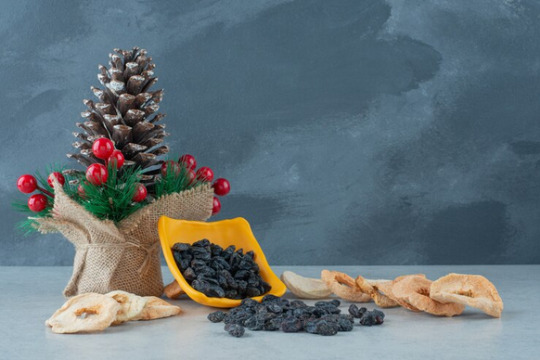
Properties and Extraction:
Bayberry wax is known for its beautiful green color and its pleasant, natural scent. It is a hard and brittle wax that solidifies at room temperature. The extraction process of bayberry wax is labor-intensive. The berries are harvested, dried, and then boiled to release the wax, which rises to the surface and solidifies upon cooling. The solidified wax is then skimmed off and purified to obtain high-quality bayberry wax.
Benefits of Bayberry Wax:
Aromatic Qualities: One of the key characteristics of bayberry wax is its delightful fragrance. When burned, it releases a pleasant and soothing aroma, making it a popular choice for scented candles and incense. The aroma is often described as earthy, sweet, and reminiscent of the outdoors.
Decorative and Craft Uses: Bayberry wax is widely used in decorative crafts such as candle-making, soap-making, and encaustic art. Its unique green color adds an aesthetic appeal to handmade creations, making it a favorite among artisans and craft enthusiasts.
Moisturizing and Protective Properties: Bayberry wax has emollient properties that make it a valuable ingredient in skincare and cosmetic products. It forms a protective barrier on the skin, helping to retain moisture and prevent dehydration. It is often found in lip balms, lotions, creams, and ointments, providing nourishment and hydration.
Sustainable and Eco-friendly: Bayberry wax is a sustainable resource as it is obtained from the berries of the bayberry shrub. The wax extraction process is typically done in a way that does not harm the shrub or the environment. This makes bayberry wax an eco-friendly alternative to synthetic waxes derived from petrochemicals.
Applications of Bayberry Wax:
Candle Making: Bayberry wax has a long history of use in candle-making. It has a higher melting point than many other waxes, resulting in candles that burn longer and more slowly. Bayberry candles are often associated with special occasions and holiday traditions.
Skincare and Cosmetics: Bayberry wax is used in various skincare and cosmetic products due to its moisturizing and protective properties. It helps to nourish the skin, lock in moisture, and create a smooth texture. It can be found in lip balms, creams, lotions, and other personal care items.
Herbal Remedies: In traditional medicine, bayberry wax has been used for its potential therapeutic properties. It has been employed in salves, ointments, and poultices for its astringent and anti-inflammatory qualities, believed to help with skin conditions and minor wounds.
Encaustic Art: Encaustic art is a technique that involves painting with molten wax. Bayberry wax, with its unique color and properties, is often used in encaustic art to create textured and visually striking artworks.
Conclusion:
Bayberry wax, with its aromatic qualities, moisturizing properties, and eco-friendly sourcing, is a versatile and valuable natural wax. From its use in candle-making and crafts to its presence in skincare and cosmetics, bayberry wax offers an array of benefits. Its rich history and unique characteristics make it a cherished ingredient in various applications. Whether you are seeking a natural and sustainable wax for your candles or a moisturizing component for your skincare routine, bayberry wax proves to be a compelling choice.
0 notes
Text
Printmaking in Installation and Experimentation - from Alexia Tala’s ‘Installations & Experimental Printmaking’ (2009) (18.4.23)
Experimenting with Techniques:
Encaustic monoprints use coloured wax instead of ink.
E.g. Paula Roland’s ‘Chant’ (2003) - encaustic monoprints and drawings on five 7m scrolls of Japanese paper
E.g. Cynthia Winika’s ‘Chinese Galaxy’ (2000) - encaustic monoprint with gunpowder
Ink and paper aren’t the only materials that you can use.
E.g. Kelley Walker’s ‘Black Star Press’ (2006) - screen print onto digitally-printed photographs, but he used white and dark chocolate instead of ink
E.g. Agathe Sorel’s ‘’ - perspex and timber installations with acrylic prints
E.g. David Rhys Jones’ ‘Cross’ (2006) - photographs printed onto ceramics
Etching can be done onto a plate made of metal, polystyrene, etc., using other processes such as oxidation, and other materials such as paint stripper and enamel.
E.g. Kaori Maki’s ‘Untitled’ (2005) - etching (paint stripper on Perspex) printed on paper
Printmedia can include collage as well as printmaking and drawing.
E.g. Oona Grimes’ ‘Masked out’ (1998) - etching with collage and spraypaint
Experimenting further:
E.g. Jan Hendrix’s ‘Centro Cultural Bella Epoca’ (2006) and ‘Punta Parque’ (2003-2004)
E.g. Dan Welden’s ‘Denver Moment’ (2005) and ‘Carolina Furrow’ (2006)
Experimenting with Display:
Printmedia can be used as a part of installation, combined with other materials or mediums. Below are some examples.
Belkis Ramirez ‘De maR en peor (From bad (sea) to worse)’ (2001)
John Hitchcock’s ‘Ritual Device’ (1999-2006)
Zoe Schieppati-Emery’s ‘Capture’ (2004)
Claire Nash’s ‘Cerebral Intuition’ (2004)
Nicola López’s ‘A Promising Tomorrow’ (2004-2005) and ‘Vertigo’ (2005)
Julie Hoyle’s ‘Head in a Box’ (2003) and ‘Dream Box’ (2004)
Printmaking techniques can also be used to produce frames in animation. Below are a couple of examples.
Felix Lazo’s ’Tuk-Ok’ (2007)
Marcus Rees Roberts’ ‘Letters to a Man at the Border’ (2006)
Susan Rostow and others’ ‘Long Journey Home’ (2018)
0 notes